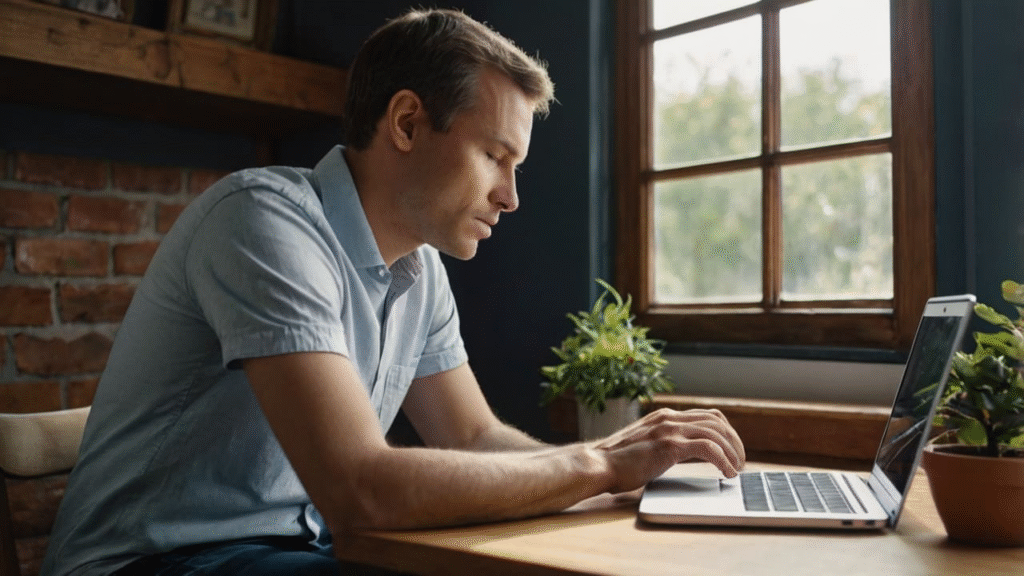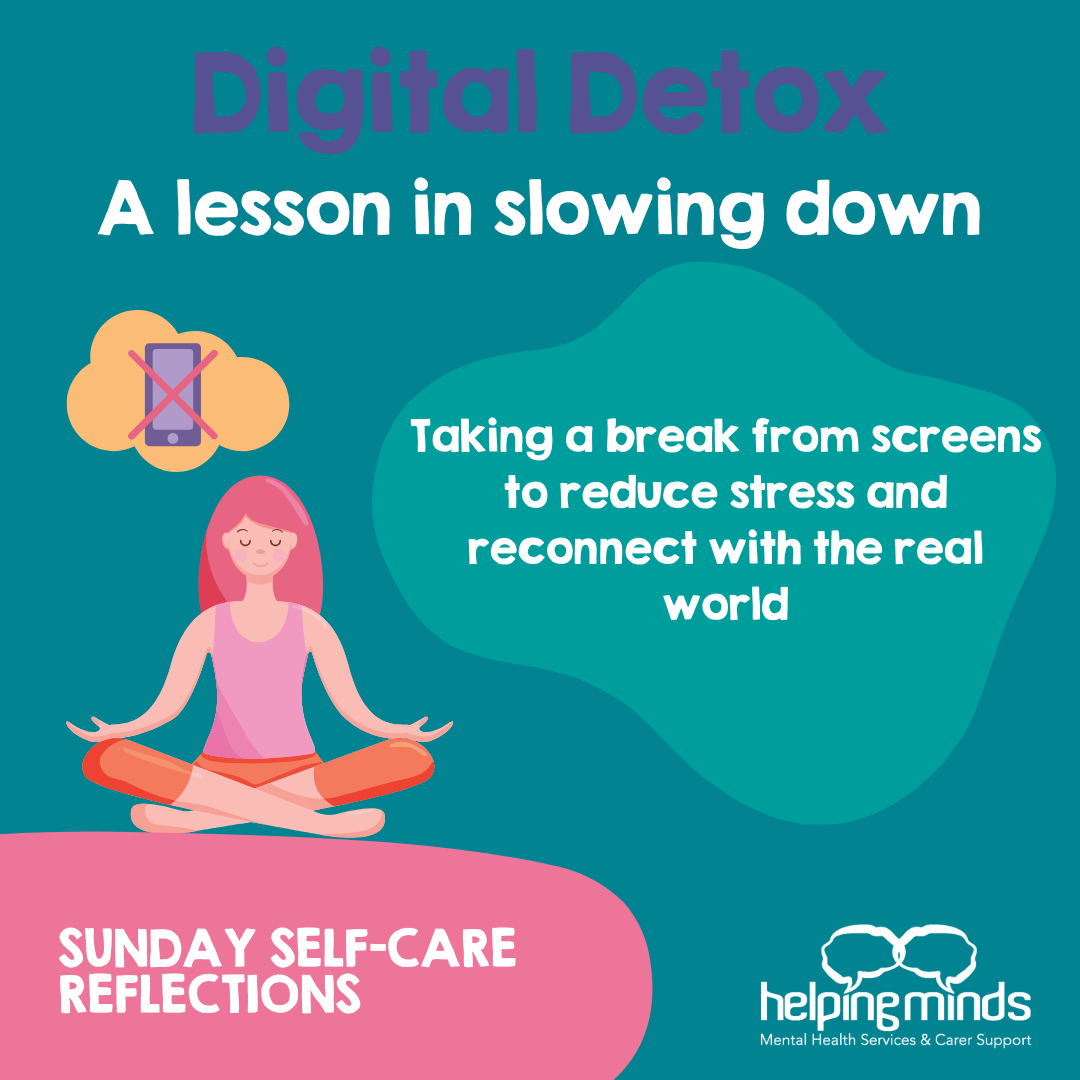Summary
In today’s hyperconnected society, screen time dominates American life. While technology has revolutionized communication, work, and leisure, it has also contributed to stress, poor sleep, and mental fatigue. A digital detox—stepping back from devices—offers a reset for mental clarity, focus, and emotional well-being. This in-depth guide explores the science of screen addiction, practical detox strategies, and long-term ways to build a healthier relationship with technology.
Digital Detox: Reducing Screen Time for Mental Clarity
Introduction: Why Digital Detox Matters in America
Screens are everywhere. From smartphones to laptops, Americans spend nearly every waking hour engaging with digital devices. A recent Nielsen report revealed that U.S. adults spend an average of 7 hours and 4 minutes daily on screens. While these devices enable work, education, and connection, overuse leads to anxiety, stress, and attention difficulties.
Mental clarity—our ability to focus, think clearly, and manage emotions—suffers under constant digital bombardment. Notifications keep us in a perpetual state of alertness, undermining productivity and calm. That’s why the concept of a digital detox—a deliberate break from digital devices—is becoming increasingly vital in today’s overstimulated world.
The Science of Screen Time and the Brain
Screen time directly impacts the brain’s chemistry and functioning.
- Dopamine stimulation: Every notification, like, or text message triggers dopamine release. Over time, the brain craves these “hits,” creating a cycle of dependency.
- Attention fragmentation: Multitasking between apps reduces the brain’s ability to maintain sustained focus. Studies show constant task-switching lowers productivity by up to 40%.
- Sleep disruption: Blue light from screens blocks melatonin, the sleep hormone, making it harder to fall asleep and stay asleep.
- Mental health risks: Excessive screen use is linked to anxiety, depression, and even social withdrawal.
A digital detox allows the brain to reset, restore balance, and rebuild focus.

Signs You Might Need a Digital Detox
Not sure if you need one? These red flags often signal that it’s time:
- Compulsive checking: Feeling anxious if you haven’t looked at your phone in minutes.
- Decline in productivity: Tasks take longer because of digital distractions.
- Sleep problems: Trouble winding down due to late-night scrolling.
- Social detachment: Preferring online interaction over real-life connection.
- Physical discomfort: Eye strain, headaches, or neck pain linked to prolonged device use.
If these sound familiar, a digital detox could help restore balance.
Benefits of Reducing Screen Time for Mental Clarity
The results of a detox can be profound:
- Sharper focus: With fewer interruptions, the brain rebuilds its ability to sustain concentration.
- Lower stress levels: Fewer notifications mean less mental clutter and anxiety.
- Improved creativity: Downtime fosters deeper thinking and imaginative problem-solving.
- Stronger relationships: Face-to-face connections grow when screens take a back seat.
- Better sleep: Eliminating late-night screen exposure restores natural sleep cycles.
Real-Life Examples of Digital Detox Success
- The corporate executive: A New York banker found himself constantly “on call.” After implementing tech-free evenings, he reported improved family relationships and sharper decision-making at work.
- The college student: A student at UCLA joined a campus “digital-free weekend” and noticed reduced stress, better sleep, and increased study productivity.
- The parent: A mother in Texas adopted “no phones at the dinner table.” The simple rule improved family bonding and reduced arguments.
These stories illustrate that detoxing doesn’t mean rejecting technology but reclaiming balance.
Practical Strategies to Start a Digital Detox
Getting started doesn’t have to be overwhelming. Here are simple, actionable steps:
- Daily micro-detoxes: Start your morning without screens for the first hour. End the day with a screen-free wind-down.
- Tech-free zones: Keep devices out of the bedroom and dining area.
- Set usage limits: Use app timers to restrict social media.
- Notification control: Turn off non-essential alerts to reduce distractions.
- Offline hobbies: Replace scrolling with journaling, outdoor walks, or cooking.
Gradual changes often lead to lasting habits.
Digital Detox at Work: Is It Possible?
Work culture in the U.S. heavily depends on screens. Yet even professionals can manage screen time better:
- Batch processing emails instead of checking constantly.
- Standing meetings without devices to encourage direct engagement.
- Employer-led wellness initiatives, such as “no-email weekends.”
Companies like Microsoft and Google are already experimenting with wellness-focused work practices, highlighting that detoxing is not only possible but beneficial at scale.
The Role of Social Media in Screen Addiction
Social media is engineered for maximum engagement. Infinite scrolling, push notifications, and algorithmic feeds create dependency. Americans spend 2+ hours daily on social platforms, much of it mindless.
The solution isn’t necessarily quitting cold turkey but:
- Limiting usage with apps like Freedom or Moment.
- Following accounts that uplift rather than drain.
- Scheduling social media time instead of constant scrolling.
Digital Detox Retreats and Programs in the U.S.
Across the U.S., retreats offer structured detox opportunities. Examples include:
- Camp Grounded (California): A summer camp for adults with zero tech allowed.
- Digital Detox Retreats (Vermont): Programs combining mindfulness, yoga, and nature immersion.
- Wellness resorts in Arizona and Colorado: Offering screen-free packages for stressed professionals.
Though often costly, these retreats provide immersive resets that spark long-term lifestyle change.
Long-Term Habits for Sustainable Screen Management
Detoxing should evolve into balance. Sustainable strategies include:
- Digital-free family nights.
- Weekly tech sabbaths.
- Replacing passive screen use with active hobbies.
- Mindful tech use—pausing to ask, “Do I need this right now?”
Over time, these practices foster intentional use rather than compulsive use.
Conclusion: Reclaiming Mental Clarity in a Digital World
Technology is not the enemy. In fact, it has transformed American life in remarkable ways. But unchecked use erodes mental health, clarity, and relationships. A digital detox is less about rejection and more about balance—using technology as a tool, not a tether. By adopting sustainable habits, Americans can enjoy the benefits of the digital age without sacrificing mental clarity.
FAQs: Digital Detox and Mental Clarity (50+ words each)
1. What exactly is a digital detox and why do Americans need it?
A digital detox is a conscious break from digital devices to restore balance and mental well-being. Americans spend more than 7 hours daily on screens, contributing to stress, poor sleep, and declining focus. A detox offers a reset, helping individuals reclaim control over technology rather than being controlled by it.
2. How does excessive screen time affect mental clarity?
Screen overuse fragments attention and overstimulates the brain’s reward pathways. This creates difficulty in sustaining focus, leading to brain fog and reduced problem-solving skills. Constant notifications elevate stress hormones, keeping the brain in “fight or flight” mode. Detoxing provides relief, allowing the brain to recover and clarity to return.
3. Can reducing screen time really improve sleep quality?
Yes. Blue light from devices interferes with melatonin, a hormone essential for regulating sleep. Late-night scrolling delays the body’s natural sleep signals. By reducing screen exposure before bed, individuals experience deeper sleep, improved morning energy, and reduced insomnia—critical for overall mental and physical health.
4. Is a digital detox realistic for professionals who rely on screens?
For professionals, avoiding screens entirely is unrealistic. However, boundaries make detoxing feasible. Time-blocking digital work, turning off notifications during deep-focus tasks, and avoiding work emails after hours can significantly reduce stress. A detox is not about eliminating technology but re-establishing control over its role in daily life.
5. How long should a digital detox last?
Detox duration depends on lifestyle. Some prefer short “micro-detoxes,” such as a few hours daily, while others commit to a full weekend or even a 30-day challenge. What matters is consistency. Small, repeated detoxes have been shown to yield more sustainable benefits than extreme but short-lived digital fasts.
6. What are simple first steps to start a digital detox?
Small changes are effective. Begin by silencing notifications, avoiding screens during meals, and leaving phones outside the bedroom. Introduce screen-free mornings to set a mindful tone for the day. Replace digital habits with fulfilling analog activities like journaling or exercise. These shifts gradually build sustainable digital wellness.
7. Are digital detox retreats worth it?
Retreats provide immersive experiences that can jumpstart lasting change. By combining nature, mindfulness, and structured activities, they help participants break free from digital dependency. While retreats may be expensive, many attendees report significant improvements in mental clarity, stress reduction, and creativity—benefits that often extend long after the retreat ends.
8. Can reducing social media time improve mental health?
Yes. Social media fuels comparison, anxiety, and information overload. Cutting use to under 30 minutes daily has been linked to reduced depression and improved mood. Focusing on meaningful online interactions rather than passive scrolling strengthens self-esteem and emotional well-being, making reduced screen time a valuable mental health strategy.
9. How can families practice digital detox together?
Families can create tech-free zones (like the dinner table) and schedule regular offline activities, such as hiking or board games. Parents should model balanced behavior, as children learn by example. Collective family detoxes encourage connection, communication, and stronger bonds, reducing screen dependency across generations.
10. What long-term benefits can a digital detox bring?
Long-term benefits include sharper focus, reduced stress, and stronger emotional resilience. Detoxing improves productivity at work, strengthens personal relationships, and enhances life satisfaction. Over time, it fosters mindful digital habits, helping individuals use technology with purpose instead of compulsion. This balance ultimately leads to sustained mental clarity.
Read this also : https://bodymindrelief.us/financial-self-care-how-to-manage-money-without-stress/
